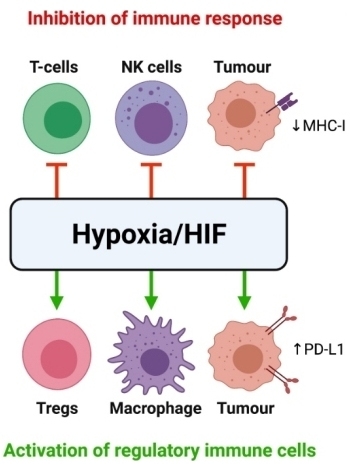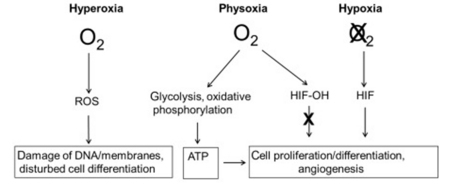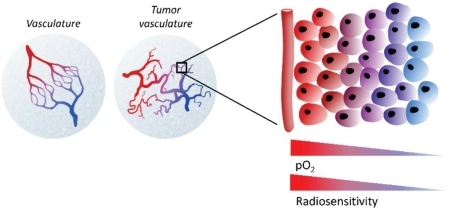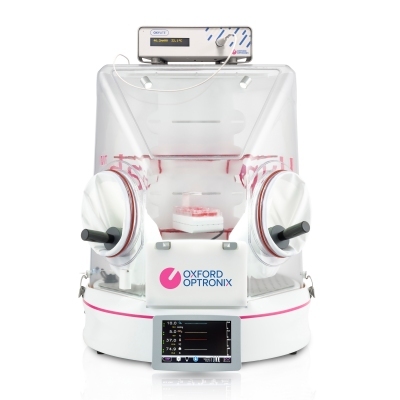Introduction
Immunotherapy has revolutionized medical research by providing innovative avenues for treating various diseases, with a particular focus on cancer. This article aims to shed light on how oxygen levels influence the immune microenvironment, tumor progression, immunotherapy resistance, and treatment efficacy. By adapting insights from prior findings, investigators can optimize immunotherapeutic strategies and improve future patient outcomes.
The role of oxygen in the immune microenvironment
Oxygen levels play a pivotal role in shaping immune responses and determining the effectiveness of immunotherapy. The microenvironment in which immune cells operate, especially under hypoxic (low oxygen) or physioxic (physiological oxygen) conditions, significantly influences immune cell behaviour, cytokine production, and overall treatment outcomes.

Hypoxic conditions, marked by low oxygen levels, can compromise immune cell functionality. Oxygen is indispensable for proper immune cell function, and its deficiency can result in reduced proliferation, impaired cytotoxicity, and compromised antigen presentation. Additionally, hypoxia fosters the accumulation of immunosuppressive cells, such as regulatory T cells (Tregs) and myeloid-derived suppressor cells (MDSCs), hindering the anti-tumour immune response. Furthermore, hypoxia induces the expression of immune checkpoint molecules, such as programmed cell death protein 1 (PD-1) and cytotoxic T-lymphocyte-associated protein 4 (CTLA-4), further dampening immune cell activity.
Conversely, maintaining physiological oxygen levels, referred to as physioxic conditions, can enhance immune cell activation and infiltration into tumours. Adequate oxygen supply facilitates the generation of reactive oxygen species (ROS), amplifying immune cell cytotoxicity against cancer cells. Physioxic conditions also support the production of pro-inflammatory cytokines and chemokines that attract immune cells to the tumour site.
Understanding the intricate interplay between oxygen levels and the immune microenvironment is essential for researchers to optimize immunotherapeutic strategies. By taking these factors into account, researchers can modulate the immune response, promote anti-tumour immunity, and overcome immunosuppressive mechanisms.
Influence of oxygen on tumour progression
The tumour microenvironment critically modulates the efficacy of immunotherapy, with solid tumours often featuring hypoxic areas due to inadequate blood supply and irregular vasculature. Hypoxia within the tumour microenvironment triggers the production of hypoxia-inducible factors (HIFs), key regulators of cellular responses to low oxygen levels. HIFs promote the expression of genes involved in angiogenesis, allowing tumours to establish new blood vessels to sustain growth and facilitate metastasis.
Moreover, hypoxia-induced metabolic adaptations in cancer cells can enhance survival and resistance to therapy. Cancer cells in hypoxic regions undergo metabolic reprogramming, favouring glycolysis over oxidative phosphorylation—the Warburg effect—providing energy and contributing to the production of metabolites supporting tumour growth and invasiveness.
By investigating the impact of oxygen levels on tumour progression, researchers can gain insights into mechanisms driving cancer aggressiveness, angiogenesis, and metastasis. This knowledge informs the development of targeted therapies disrupting hypoxia-driven pathways and inhibiting tumour growth.
Influence of oxygen on immunotherapy resistance
Immunotherapy resistance poses a significant challenge in clinical practice, limiting the effectiveness of these treatments. Recent studies underscore the role of oxygen levels in immune checkpoint inhibitors (ICIs), a widely used immunotherapy approach. Hypoxia-inducible factors (HIFs) are pivotal in the cellular response to low oxygen levels and implicated in immunotherapy resistance. Elevated HIF levels create an immunosuppressive microenvironment, impairing the anti-tumor immune response. HIFs can upregulate the expression of immune checkpoint molecules, such as programmed cell death ligand 1 (PD-L1), which interacts with PD-1 on immune cells, inhibiting their activity. Increased PD-L1 expression on tumour cells leads to ICI resistance, hindering immune cells from effectively recognizing and eliminating cancer cells.

Understanding the impact of oxygen on immunotherapy resistance is crucial in identifying potential biomarkers and developing strategies to overcome resistance mechanisms. Targeting hypoxia-driven pathways or combining immunotherapy with interventions modulating oxygen levels may enhance the effectiveness of immunotherapeutic approaches, improving patient outcomes.
Influence of oxygen levels on treatment efficacy
Optimizing oxygen levels during immunotherapy studies significantly enhances treatment efficacy. Preclinical studies demonstrate that low oxygen levels can impair the anti-tumour immune response, while physioxic conditions can promote immune cell activation and infiltration into tumours. In a hypoxic microenvironment, immunotherapy strategies face challenges due to compromised immune cell functionality and increased immunosuppression. Limited oxygen supply hampers the production of ROS by immune cells, reducing their cytotoxicity against cancer cells. Hypoxia also induces the expression of immune checkpoint molecules, such as PD-L1, inhibiting immune cell activity and diminishing treatment effectiveness.

Conversely, ensuring the maintenance of physiological oxygen levels (physoxia) enhances treatment efficacy by promoting immune cell activation and anti-tumour immune responses. Adequate oxygen supply supports the production of pro-inflammatory cytokines and chemokines, attracting immune cells to the tumour site and enhancing cytotoxicity. Physioxic conditions improve the delivery and penetration of immunotherapeutic agents within the tumour, maximizing their effectiveness.
Considering the HypoxyLab™ for immunotherapy research
HypoxyLab offers a state-of-the-art solution for scientists needing to precisely control oxygen availability in their tissue culture studies.
The HypoxyLab operates like a standard CO2 incubator but additionally provides precise control over the oxygen environment via an easy-to-use touchscreen, enabling researchers to create hypoxic / physioxic conditions that accurately mimic any tissue microenvironment.

For the ultimate in scientific rigor, the system utilizes the partial pressure of oxygen to regulate its environment, allowing scientists to study the impact of oxygen on immune cell behaviour, cytokine production, and treatment outcomes with unsurpassed accuracy and reproducibility.
The HypoxyLab employs a newly developed, proprietary gas controller that maximizes accuracy while minimizing nitrogen usage. It features built-in HEPA filtration and support for the OxyLite™ add-on for optional real-time dissolved oxygen measurements from within cell cultures and media.
Oxford Optronix is a privately owned UK company that takes pride in its customer support service. Our team of product experts stands ready to provide comprehensive support, including guidance on experimental design and data analysis, with the aim of maximizing return on investment for the end-user.
Conclusion
The consideration of oxygen levels as a crucial parameter in immunotherapy studies holds immense potential for advancing the field. By considering hypoxic and physioxic conditions, scientists stand to gain a deeper understanding of the immune microenvironment, overcome immunotherapy resistance, enhance treatment efficacy, and unveil new therapeutic targets. The above review underlines the importance of oxygen in immunotherapy research and encourages researchers to explore this promising avenue for improving patient outcomes.
Download this article
Author: Justin Croft, April 2024